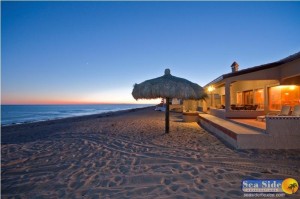 The holiday season is winding down but there are still months of winter left ahead – presenting the perfect opportunity to escape to Mexico. Whether you just need a break from snowy weather, could use a time away to refresh after holiday preparations, or are just itching for some adventure and exploration, a winter vacation in Mexico offers just what many of us need.
The holiday season is winding down but there are still months of winter left ahead – presenting the perfect opportunity to escape to Mexico. Whether you just need a break from snowy weather, could use a time away to refresh after holiday preparations, or are just itching for some adventure and exploration, a winter vacation in Mexico offers just what many of us need.
Winter Mexico beach vacations
Unsurprisingly, the winter months in Mexico do lead to cooler temperatures than in the summer but in the southern parts of Mexico, the temperature remains in the upper 70’s and 80’s – plenty warm to enjoy the beach in locales like Puerto Vallarta and Cancun. Without a doubt, the warm weather is a major attraction, drawing visitors to these popular destinations all season long.
When you’re not relaxing on palm-lined beaches, there are ancient Mayan ruins to explore and numerous day trips to local attractions. Ecotours, for example, are especially popular escapes that allow visitors to enjoy wildlife during the more mild season.
Mexico’s seasonal celebrations
Though Christmas has come and gone, celebrations continue throughout Mexico. There are plenty of annual festivals going on right from the start of the year. New Year’s Day, or Ano Nuevo, is a national holiday when regular businesses are closed but most tourist attractions are still up and running. Not long after, Dia de Reyes, or Kings Day, is celebrated on January 6. On Dia de Reyes, Mexican children receive gifts from the three kings (the Magi) and eat Rosca de Reyes, or King’s Cake. This wreath-shaped bread hides a small doll to represent the baby Jesus.
By the end of January, the festivities are just beginning; February 1 marks Constitution Day – Dia de la Constitucion – a national holiday celebrating the 1917 adoption of the country’s constitution following the Mexican Revolution. The next day, February 2, is the religious holiday Dia de la Candelaria, which officially marks the end of the Christmas season in Mexico. Dia de la Candelaria commemorates when Mary brought baby Jesus to the temple 40 days after birth to present him as her firstborn, and Catholics in Mexico celebrate by bringing statues of baby Jesus to church for blessing.
Almost as soon as the Christmas season officially ends, many Mexican cities kick off Carnaval. Each city’s celebration runs on its own schedule that may vary slightly from place to place, but they generally run for five days before Ash Wednesday (which falls on March 1 in 2017).
Soak up local culture
Nothing provides a physical and emotional recharge like a change in scenery. Not only does Mexico feature a beautiful landscape that offers an escape from the snowy tundra of the United States and Canada in winter, but it offers an immersion in traditional culture. Even in the most tourist-oriented destinations, visitors can sample traditional food, buy Mexican folk art, and enjoy the wonderful hospitality of local residents.

 Who needs Times Square when there is a world of possibilities in sunny Mexico? This year, ditch the snow and the cold and head south for New Year’s. It’s easy to book a premier vacation rental at a resort town in Mexico. The hardest part of arranging your trip is figuring out which particular destination suits you best. Here’s a quick look at some of the possibilities for ringing in 2017.
Who needs Times Square when there is a world of possibilities in sunny Mexico? This year, ditch the snow and the cold and head south for New Year’s. It’s easy to book a premier vacation rental at a resort town in Mexico. The hardest part of arranging your trip is figuring out which particular destination suits you best. Here’s a quick look at some of the possibilities for ringing in 2017.